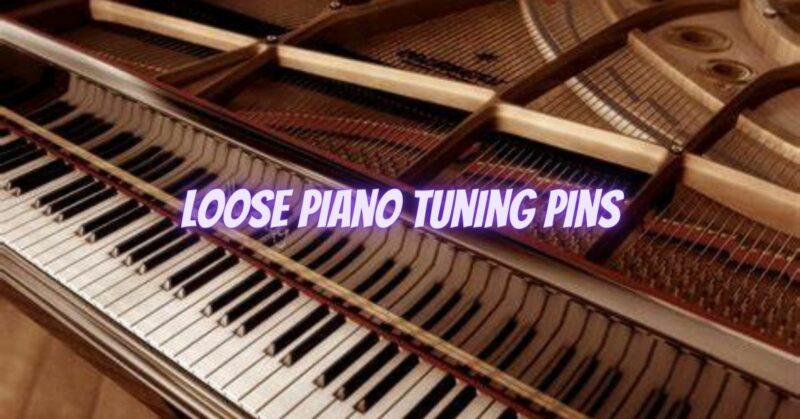Piano tuning pins play a critical role in holding the strings at the desired tension, ensuring accurate pitch and stability. However, over time, these pins can become loose, leading to tuning instability and affecting the overall performance of the instrument. In this article, we will delve into the causes, consequences, and potential solutions for loose piano tuning pins.
Causes of Loose Tuning Pins:
- Age and Wear: As pianos age, the wood surrounding the tuning pins can experience slight shrinkage or wear, reducing the grip on the pins. Over time, this can cause the pins to become loose and affect tuning stability.
- Temperature and Humidity Fluctuations: Variations in temperature and humidity levels can lead to expansion and contraction of the wood around the tuning pins. This can weaken the grip on the pins, resulting in them becoming loose and affecting the piano’s ability to hold a tune.
- Improper Tuning Techniques: Incorrect or excessive force applied during the tuning process can contribute to loosening of the pins. Inadequate techniques or excessive pressure on the pins can cause the wood to compress and the pins to become less secure over time.
Consequences of Loose Tuning Pins:
- Tuning Instability: Loose tuning pins make it challenging to maintain accurate and stable pitch. The strings may not hold their tension consistently, resulting in frequent detuning and requiring more frequent tuning sessions.
- Inconsistent Tone and Intonation: When tuning pins are loose, the strings may vibrate with varying tension, resulting in inconsistent tone quality and intonation across the piano. This can affect the clarity, resonance, and overall musical experience.
- Difficulty in Tuning: Loose pins make it difficult for a piano technician to achieve precise and stable tuning. The pins may slip during the tuning process, making it challenging to set the desired tension and pitch accurately.
Solutions for Loose Tuning Pins:
- Pin Tightening: In some cases, a qualified piano technician can tighten loose tuning pins by adjusting the friction fit between the pin and the wood. This involves carefully increasing the grip on the pins to restore stability and improve tuning reliability.
- Pinblock Treatment or Replacement: If the tuning pins continue to loosen despite attempts to tighten them, the pinblock—the wooden block in which the tuning pins are set—may require treatment or replacement. Techniques such as pinblock reaming or the installation of a new pinblock can restore stability and secure the tuning pins.
- Piano Restoration or Rebuilding: In severe cases, where the piano has extensive wear, damage, or an aging pinblock, a complete piano restoration or rebuilding may be necessary. This involves replacing the pinblock, tuning pins, and potentially other structural components to ensure long-term stability and performance.
Conclusion:
Loose tuning pins can significantly impact a piano’s tuning stability, tonal consistency, and overall playability. Factors such as age, wear, temperature and humidity fluctuations, and improper tuning techniques can contribute to loose pins. It is crucial to consult a qualified piano technician who can assess the situation and recommend appropriate solutions, such as pin tightening, pinblock treatment, or piano restoration. By addressing loose tuning pins promptly, pianists can enjoy a more stable and reliable instrument, allowing them to fully express their musicality and enjoy the rich and accurate sound of their piano.


